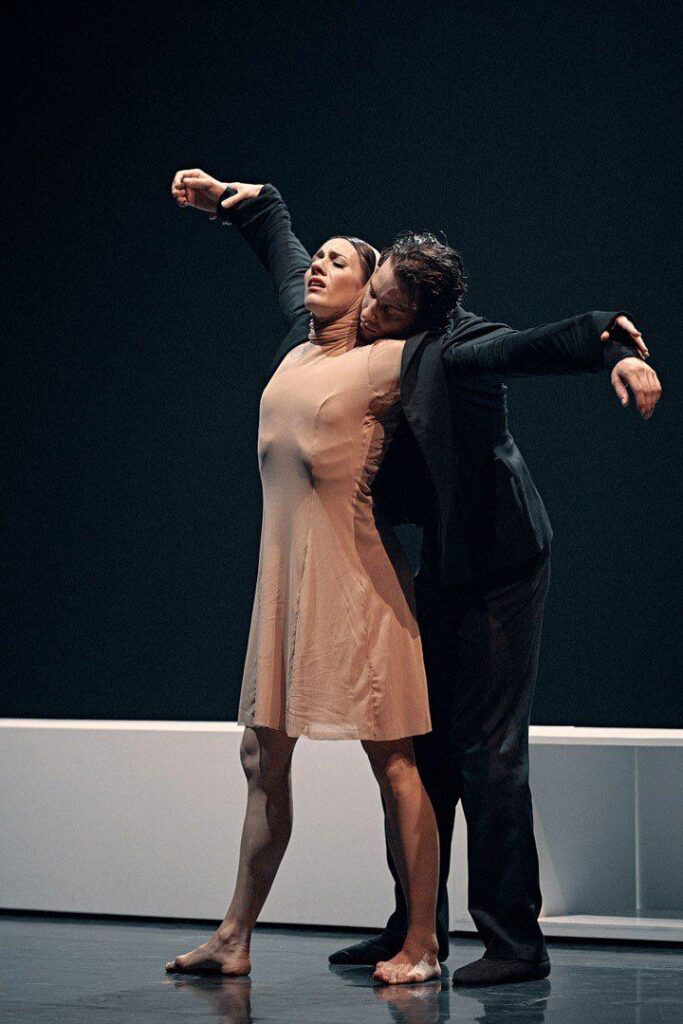The piece offers the public an intimate incursion in the universe of Les Grands Ballets.
This contemporary creation by young choreographer Edward Clug, who also brilliantly revisited the celebrated Carmina Burana last season, has known success since its premiere in 2017.
Filmed directly on the stage of the company’s Studio-Théâtre and in compliance with the sanitary measures.
Stabat MATER is a highly emotional piece that requires a broad dramatic range from our dancers. Presenting a show in a digital format is a different experience: the public sees the piece from up-close. I decided that if we couldn’t be onstage, I would take advantage of this constraint and give my audience a front row Stabat MATER, like they’ve never seen it before.
Ivan Cavallari, Artistic director of Les Grands Ballets




Presented for the first time in 2017 in a mesmerizing double bill with a spiritual focus, Stabat MATER by Edward Clug features the company’s dancers on the notes of another great musical work. The choreographer engages a resolutely modern dialogue with Pergolesi’s Stabat Mater, a masterpiece of the Italian Baroque. For Clug, the tremendously expressive score conveys life and hope.
Capturing the sorrow and anguish of the Virgin Mary at the crucifixion of her son, the medieval religious poem Stabat MATER, Latin for “the mother was standing,” was composed by Franciscan monk Jacopone da Todi. Put to music many times, it has become something of a genre unto itself, one where many composers have made their mark (including Scarlatti a few years earlier, at the start of the 18th century). Pergolesi’s version is considered to be one of the most poignant.
It has enjoyed lasting success and become a fixture of Baroque music. Simply written for two voices, basso continuo and strings, Stabat MATER’s 12 movements alternate between solos and duos, each plumbing the depths of human passion. It is a tremendously expressive work that invites reflection and contemplation. It is also a metaphysical masterpiece that, for choreographer Edward Clug, is first and foremost a work of hope.
Stabat mater dolorosa / Juxta crucem lacrimosa / Dum pendebat Filius
Excerpt from Stabat Mater, a medieval poem from monk Jacopone da Todi
La mère douloureuse se tenait debout / Au pied de la croix en larmes / Tandis qu’on y suspendait son Fils.
Discover more from videotanz
Subscribe to get the latest posts sent to your email.

 The Rite of Spring by Edward Clug
The Rite of Spring by Edward Clug The Dying Swans Project by Edward Clug
The Dying Swans Project by Edward Clug Petrushka by Edward Clug
Petrushka by Edward Clug Peer Gynt by Edward Clug
Peer Gynt by Edward Clug New Works by Edward Clug
New Works by Edward Clug Cluster by Edward Clug
Cluster by Edward Clug